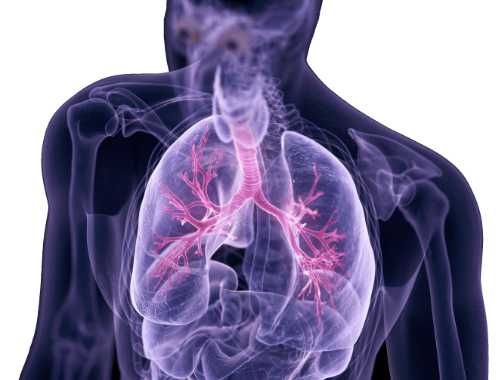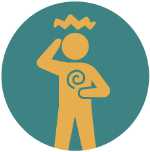Role of Phlegm-Dampness
and Digestion in Asthma
In Traditional Chinese Medicine (TCM), asthma is not viewed only as a problem of the lungs—it’s often rooted in the digestive system. A key concept in TCM is the role of phlegm-dampness, a type of internal obstruction that can accumulate over time due to poor digestion and fluid metabolism. For many people with chronic asthma, resolving this phlegm-dampness is just as important as calming the wheezing itself.
The Spleen (Pí 脾) in TCM is responsible for transforming food and drink into Qi and blood. It also plays a central role in moving fluids throughout the body. When the Spleen is weak—due to poor diet, overthinking, or lack of movement—fluids can stagnate and congeal into phlegm (tán 痰). This phlegm may lodge in the Lungs (Fèi 肺), where it disrupts the normal flow of Qi, leading to coughing, chest congestion, shortness of breath, and wheezing.
 Not all phlegm is visible. Some people with asthma have sticky or thick sputum, while others have little or no expectoration but still suffer from tightness or rattling in the chest. TCM refers to this as “invisible phlegm,” which still blocks the normal movement of Lung Qi even if it isn’t coughed up. In either case, phlegm is a form of internal dampness that obstructs breathing.
Not all phlegm is visible. Some people with asthma have sticky or thick sputum, while others have little or no expectoration but still suffer from tightness or rattling in the chest. TCM refers to this as “invisible phlegm,” which still blocks the normal movement of Lung Qi even if it isn’t coughed up. In either case, phlegm is a form of internal dampness that obstructs breathing.
Many chronic asthma patterns involve a cycle: weak digestion leads to dampness, which turns into phlegm, which then affects the Lungs and weakens breathing. The result is a repeating pattern of flare-ups that never fully resolve unless the root cause—usually Spleen deficiency—is addressed.
Treatment focuses on strengthening the Spleen, drying dampness, and transforming phlegm. Herbal formulas such as Er Chen Tang (二陈汤, “Two Aged Herbs Decoction”) are often used as a base. This formula contains warming, drying herbs that help the Spleen move fluids properly and resolve phlegm. In more heat-type cases, herbs like Huang Qin (黄芩) or Zhe Bei Mu (浙贝母) may be added to clear heat and thin sticky phlegm.
Dietary therapy is essential in managing phlegm-damp asthma. Cold drinks, raw foods, dairy, greasy meals, and sugary snacks can all weaken the Spleen and produce dampness. In contrast, warm, lightly cooked meals with ingredients like ginger, leeks, and barley can support digestion and help clear phlegm over time.
Acupuncture points such as (ST40 丰隆 Fēnglóng) and (SP9 阴陵泉 Yīnlíngquán) are commonly used to resolve phlegm-dampness and support Spleen function. These points help the body restore its natural fluid metabolism and reduce the internal burden on the Lungs.
In short, many asthma cases—especially chronic or lingering ones—require more than just symptom relief. By addressing the Spleen’s role in generating phlegm, TCM provides a path toward longer-term improvement. Clearing dampness and supporting digestion isn’t just good for the gut—it can open the way for easier breathing as well.
Vocabulary Guide
- Pí (脾) – Spleen; governs digestion and fluid transformation
- Fèi (肺) – Lung; affected by phlegm-dampness in asthma
- Qi (气) – Vital energy or life force
- Tán (痰) – Phlegm; can be visible or invisible, obstructing the lungs
- Er Chen Tang (二陈汤) – “Two Aged Herbs Decoction,” used to resolve phlegm and dry dampness
- Huang Qin (黄芩) – Scutellaria; clears Lung heat and phlegm
- Zhe Bei Mu (浙贝母) – Fritillaria; used for hot-type phlegm and chest tightness
- Fēnglóng (丰隆 ST40) – Major point for transforming phlegm
- Yīnlíngquán (阴陵泉 SP9) – Acupoint to drain dampness and support Spleen





